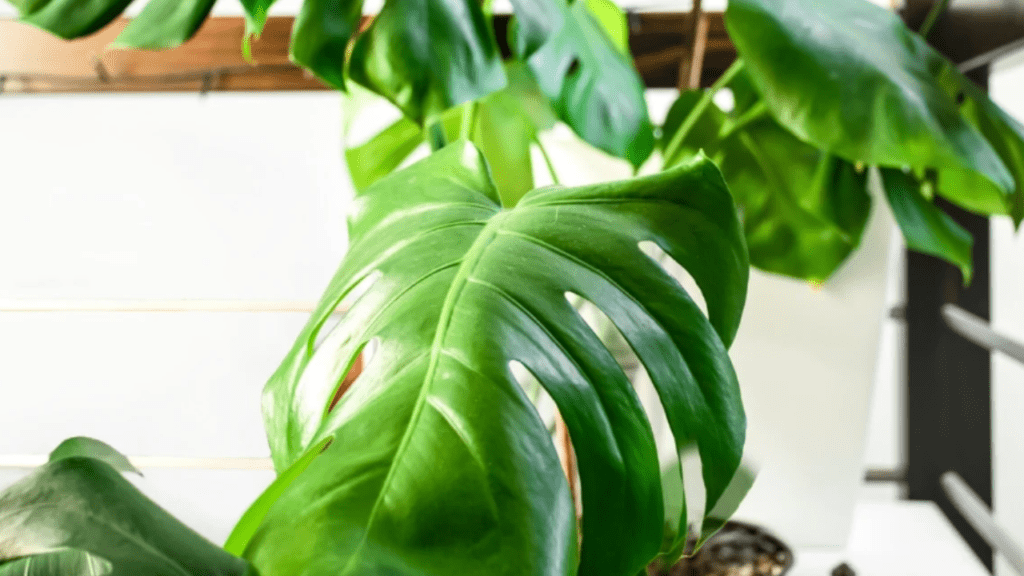
Monstera Leaves Curling: Causes and Solutions for Healthy Growth
If you’re a plant lover, you may have experienced the frustration of seeing your Monstera leaves curling. But fear not! In this article, we’ll dive into the common causes of this issue and provide practical solutions to promote healthy growth for your plant. We’ll also discuss the importance of proper care and maintenance to ensure your Monstera thrives. So if you want to keep your Monstera looking lush and vibrant, keep reading for all the tips and tricks you need.
Monstera leaves curling is a common issue that many plant owners face. There are several reasons why this may occur, such as overwatering, underwatering, low humidity, or inadequate light. These factors can impact the health of the plant and result in curled leaves. To promote healthy growth, it’s important to address the root cause of the issue. For example, if the leaves are curling due to overwatering, adjusting the watering schedule and allowing the soil to dry out between waterings can help resolve the problem. Additionally, maintaining the right level of humidity and providing adequate sunlight can also contribute to healthy, uncurled leaves. By understanding the causes of Monstera leaves curling and implementing appropriate solutions, you can ensure that your plant continues to thrive and remain visually appealing. Remember, proper care and maintenance are essential for the overall well-being of your Monstera.
Table of Contents
ToggleUnderstanding Monstera Plants
Basic information about Monstera plants (types, growth habits, ideal conditions).
Monstera plants, also known as Swiss cheese plants, are popular houseplants known for their large, glossy leaves and unique holey foliage. There are different types of Monstera plants, including the classic Monstera deliciosa and the smaller Monstera adansonii. These plants are native to the rainforests of Central and South America and are known for their ability to climb and vine.
In terms of growth habits, Monstera plants thrive in bright, indirect light and prefer well-draining soil. They are known for their vigorous growth and can benefit from a support structure such as a moss pole or trellis to climb on. With the right conditions, Monstera plants can grow quite large and make a striking addition to any indoor space.
Ideal conditions for Monstera plants include a warm and humid environment, with regular watering and occasional misting to maintain the right level of moisture in the air. However, it’s important to avoid overwatering, as this can lead to root rot and other issues.
In summary, Monstera plants are beautiful and unique houseplants that require proper care and attention to thrive. Understanding their growth habits and ideal conditions can help you provide the best care for your Monstera plant and enjoy its striking foliage for years to come.
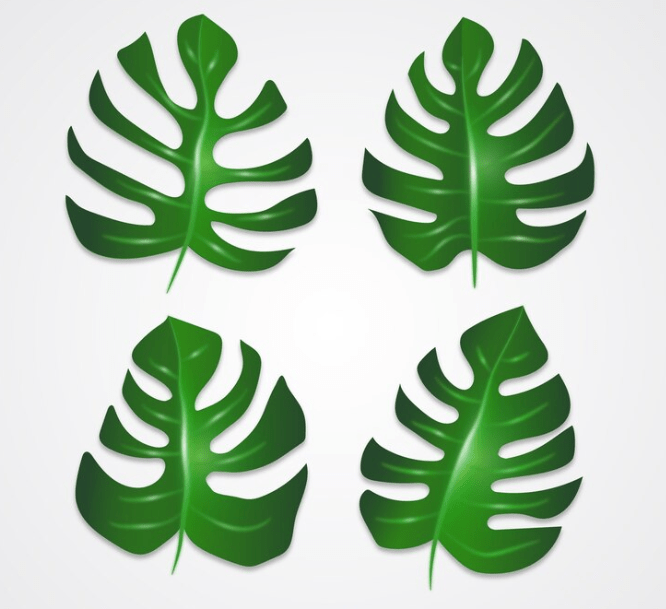
Importance of healthy leaves for overall plant health.
Healthy leaves are crucial for the overall health of a plant. They play a key role in the process of photosynthesis, where the plant converts sunlight into energy. Healthy leaves also indicate that the plant is receiving the right amount of water, nutrients, and sunlight. If the leaves are yellowing, wilting, or showing signs of disease, it can be a sign that the plant is not getting the proper care it needs. In order to maintain healthy leaves, it’s important to provide the plant with the right environmental conditions, such as proper light, water, and temperature. Additionally, regular pruning and removing any diseased or damaged leaves can help promote the growth of new, healthy leaves. Taking care of the leaves is essential for the overall health and vitality of the plant, and can contribute to its longevity and beauty.
Identifying Curling Leaves
Description of what curling leaves look like.
Curling leaves on plants can be a sign of various issues that the plant may be facing. Typically, curling leaves may appear as the edges of the leaves curling upwards or downwards, and the leaves may also appear distorted or misshapen. This could be a result of environmental stress, such as extreme temperatures or inadequate water and sunlight. It could also be a sign of pest infestation or disease. It’s important to carefully examine the curling leaves and look for any other symptoms, such as discoloration or spots, in order to accurately diagnose the issue. Once the cause of the curling leaves is identified, steps can be taken to address the problem and restore the overall health of the plant.
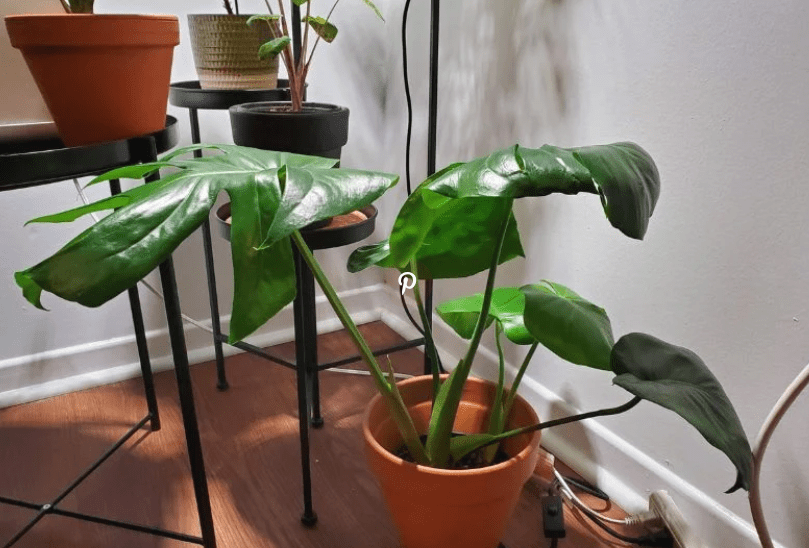
Differentiating between normal leaf curl (due to new growth) and problematic curl.
Curling leaves on plants can be a common occurrence as new growth develops, causing the edges of the leaves to curl upwards or downwards. This is often a natural and harmless process as the plant adjusts to new environmental conditions. However, when the curling leaves appear distorted or misshapen, it may be a sign of a more problematic issue. It’s important to carefully observe the curling leaves and look for any additional symptoms, such as discoloration, spots, or a sticky residue, to accurately diagnose the problem.
Normal leaf curl due to new growth is typically uniform and occurs on the new, tender leaves of the plant. This type of curling is often a sign of healthy growth and is nothing to be concerned about. On the other hand, problematic curling may be caused by environmental stress, such as extreme temperatures, inadequate water or sunlight, pest infestation, or disease. In these cases, the curling leaves may be accompanied by other signs of distress, and it’s important to address the underlying issue in order to restore the overall health of the plant.
To differentiate between normal and problematic leaf curl, it’s crucial to closely monitor the plant’s overall condition and take note of any changes in its environment. By accurately identifying the cause of the curling leaves, appropriate steps can be taken to address the issue and promote the plant’s well-being.
Causes of Monstera Leaves Curling
Watering Issues
If you notice your Monstera plant’s leaves curling, it’s important to carefully observe the curling leaves and look for any additional symptoms, such as discoloration, spots, or a sticky residue, to accurately diagnose the problem. Normal leaf curl due to new growth is typically uniform and occurs on the new, tender leaves of the plant. This type of curling is often a sign of healthy growth and is nothing to be concerned about. On the other hand, problematic curling may be caused by environmental stress, such as extreme temperatures, inadequate water or sunlight, pest infestation, or disease. In these cases, the curling leaves may be accompanied by other signs of distress, and it’s important to address the underlying issue in order to restore the overall health of the plant. To differentiate between normal and problematic leaf curl, it’s crucial to closely monitor the plant’s overall condition and take note of any changes in its environment. By accurately identifying the cause of the curling leaves, appropriate steps can be taken to address the issue and promote the plant’s well-being. If you suspect that the curling is due to watering issues, make sure to adjust your watering routine and ensure that your Monstera is receiving the right amount of water for its specific needs.
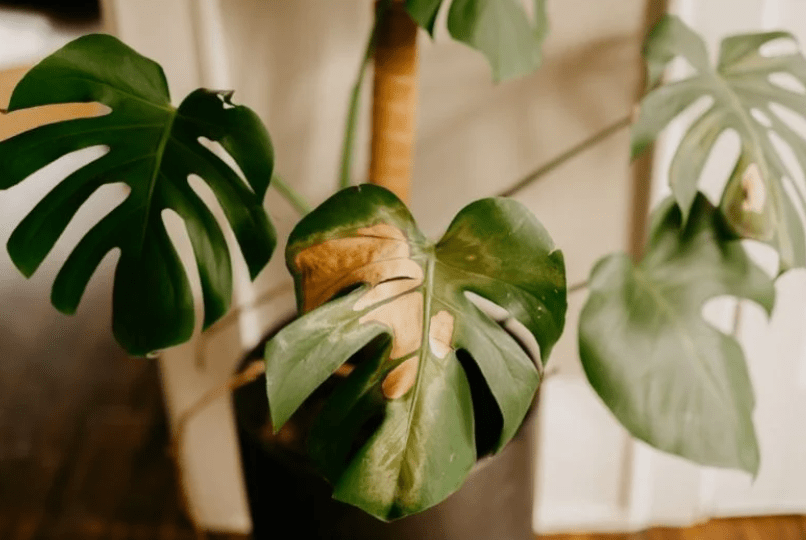
Environmental Factors
Can have a significant impact on the health and growth of plants. It is important to understand the different environmental factors that can affect your plants, such as temperature, water, sunlight, pests, and disease. Extreme temperatures, either too hot or too cold, can cause stress to the plant and result in leaf curling. Inadequate water, whether too much or too little, can also cause issues with the plant’s leaves. It’s important to monitor the plant’s watering needs and ensure that it is receiving the right amount of water. Additionally, sunlight is essential for the plant’s growth, and lack of sunlight can result in leaf curling. Pests and disease can also cause distress to the plant and lead to leaf curling. It’s important to regularly inspect your plants for any signs of pests or disease and take appropriate measures to address the issue. By understanding and addressing these environmental factors, you can promote the overall health and well-being of your plants.
Nutrient Deficiencies
Nutrient Deficiencies can also cause leaf curling in plants. If a plant is not receiving the necessary nutrients, it may exhibit symptoms such as yellowing or curling of the leaves. Common nutrient deficiencies include nitrogen, phosphorus, potassium, and magnesium. It’s important to provide your plants with a balanced fertilizer to ensure they are receiving the necessary nutrients for healthy growth. You can also test the soil to determine if there are any nutrient deficiencies and adjust your fertilization routine accordingly. By addressing nutrient deficiencies, you can help prevent leaf curling and promote the overall health of your plants.
Pests and Diseases
Pests and Diseases can also cause leaf curling in plants. Common pests such as aphids, mites, and caterpillars can cause damage to the leaves, leading to curling or discoloration. Diseases such as fungal infections or bacterial infections can also affect the health of your plants, resulting in leaf curling and other symptoms. It’s important to regularly inspect your plants for signs of pests and diseases and take appropriate measures to control and prevent them. This may include using organic insecticides, practicing good sanitation in the garden, or removing infected plants to prevent the spread of disease. By understanding and addressing these environmental factors, you can promote the overall health and well-being of your plants. It’s important to stay proactive in managing pests and diseases to prevent leaf curling and maintain the vitality of your garden.
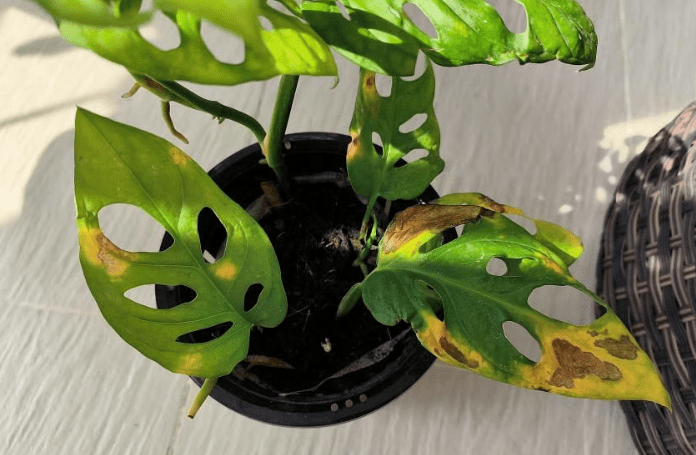
Diagnosing the Problem
Step-by-step guide to identifying the cause of curling leaves.
When it comes to identifying the cause of curling leaves in your plants, it’s important to consider a few key factors. One common cause is environmental stress, such as excessive heat, drought, or overwatering. These factors can affect the health of your plants and lead to leaf curling as a result. Another potential cause is pests and diseases. Common pests such as aphids, mites, and caterpillars can cause damage to the leaves, leading to curling or discoloration. Diseases such as fungal infections or bacterial infections can also affect the health of your plants, resulting in leaf curling and other symptoms. It’s important to regularly inspect your plants for signs of pests and diseases and take appropriate measures to control and prevent them. This may include using organic insecticides, practicing good sanitation in the garden, or removing infected plants to prevent the spread of disease. By understanding and addressing these environmental factors, you can promote the overall health and well-being of your plants. It’s important to stay proactive in managing pests and diseases to prevent leaf curling and maintain the vitality of your garden.
Visual signs to look for (yellowing, browning, spots).
When caring for your plants, it’s important to keep an eye out for visual signs that may indicate a problem. Yellowing, browning, and the presence of spots on your plant’s leaves can be indicators of potential issues. One potential cause to consider is environmental stress, such as over or under-watering, excessive heat, or inadequate sunlight. These factors can lead to leaf curling and other symptoms, so it’s important to ensure that your plants are receiving the appropriate care and environmental conditions. Another potential cause is pests and diseases. Common pests such as aphids, mites, and caterpillars can cause damage to the leaves, leading to curling or discoloration. Diseases such as fungal infections or bacterial infections can also affect the health of your plants, resulting in leaf curling and other symptoms. It’s important to regularly inspect your plants for signs of pests and diseases and take appropriate measures to control and prevent them. This may include using organic insecticides, practicing good sanitation in the garden, or removing infected plants to prevent the spread of disease. By understanding and addressing these environmental factors, you can promote the overall health and well-being of your plants. It’s important to stay proactive in managing pests and diseases to prevent leaf curling and maintain the vitality of your garden.
Preventing Monstera Leaves Curling
Proper Watering Techniques
Proper watering techniques are essential for the health of your plants, including preventing leaf curling. Overwatering or underwatering can both lead to leaf curling, so it’s important to find the right balance. When watering your plants, make sure the soil is evenly moist but not waterlogged. Allow the top inch of soil to dry out before watering again, and be mindful of the specific water needs of each plant. It’s also important to water at the base of the plant to avoid getting the leaves wet, which can promote disease. Using a watering can or a drip irrigation system can help you control the amount and location of water. Additionally, consider the humidity levels in your home or garden, as low humidity can also cause leaf curling. You may need to use a humidifier or mist your plants to maintain the proper humidity levels. By paying attention to proper watering techniques, you can help prevent leaf curling and ensure the health of your plants.
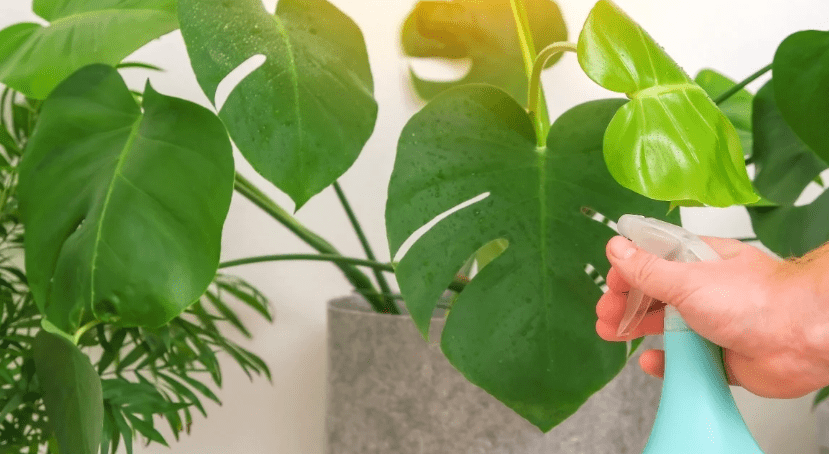
Optimal Environmental Conditions
are crucial for the health and growth of your plants. When it comes to watering, it’s important to ensure that the soil is evenly moist but not waterlogged. Overwatering can lead to root rot and other issues, so it’s best to allow the top inch of soil to dry out before watering again. Be mindful of the specific water needs of each plant, as some may require more water than others.
It’s also important to water at the base of the plant rather than from above. Getting the leaves wet can promote disease, so using a watering can or a drip irrigation system can help you control the amount and location of water.
In addition to proper watering, it’s important to consider the humidity levels in your home or garden. Low humidity can also cause leaf curling, so you may need to use a humidifier or mist your plants to maintain the proper humidity levels.
By paying attention to these factors and using proper watering techniques, you can help prevent leaf curling and ensure the overall health and vitality of your plants.
Remedies for Curling Leaves
Watering Adjustments
It’s important to make adjustments to your watering routine to prevent leaf curling and promote the health of your plants. Overwatering can lead to root rot and other issues, so it’s best to allow the top inch of soil to dry out before watering again. Be mindful of the specific water needs of each plant, as some may require more water than others. Water at the base of the plant rather than from above to avoid getting the leaves wet, which can promote disease. Using a watering can or a drip irrigation system can help you control the amount and location of water. Additionally, consider the humidity levels in your home or garden, as low humidity can also cause leaf curling. Using a humidifier or misting your plants can help maintain the proper humidity levels. By making these adjustments, you can help prevent leaf curling and ensure the overall health and vitality of your plants.
Environmental Adjustments
Can have a significant impact on the health and growth of your plants. One important factor to consider is the watering schedule. Overwatering can lead to root rot and other issues, so it’s best to allow the top inch of soil to dry out before watering again. It’s important to be mindful of the specific water needs of each plant, as some may require more water than others. Watering at the base of the plant rather than from above can help avoid getting the leaves wet, which can promote disease. Using a watering can or a drip irrigation system can help you control the amount and location of water, ensuring that your plants receive the right amount of moisture. Additionally, consider the humidity levels in your home or garden, as low humidity can also cause leaf curling. Using a humidifier or misting your plants can help maintain the proper humidity levels and prevent leaf curling. By making these environmental adjustments, you can help prevent leaf curling and ensure the overall health and vitality of your plants.
Nutrient Corrections
Nutrient Corrections are essential to ensuring the health and growth of your plants. If you notice any signs of nutritional deficiencies, such as yellowing leaves or stunted growth, it’s important to take action to address these issues. First, consider testing the soil to determine what nutrients are lacking. You can then choose a fertilizer that is specifically formulated to address these deficiencies. It’s important to follow the instructions on the fertilizer packaging and to not over-fertilize, as this can lead to nutrient imbalances and harm your plants. In addition to fertilizing, you can also consider adding organic matter, such as compost, to enrich the soil and provide a natural source of nutrients for your plants. It’s important to monitor the health of your plants and make adjustments as needed to ensure they have the nutrients they need to thrive. By taking these steps, you can ensure that your plants receive the proper nutrients and continue to grow and flourish.
Pest and Disease Treatments
Pest and Disease Treatments are important to keep your plants healthy and thriving. If you notice any signs of pest infestation or disease, it’s crucial to take action promptly. Consider using organic pest control methods, such as neem oil or insecticidal soap, to address common pests like aphids or mites. For more serious pest problems, you may need to consider using chemical treatments, but it’s important to follow the instructions carefully and minimize any potential harm to beneficial insects and the environment. Additionally, for plant diseases, consider using fungicides or other treatments to address the issue and prevent it from spreading to other plants. Regularly inspect your plants for any signs of pest or disease and take proactive measures to keep them healthy. Remember to always read and follow the instructions on any pest or disease treatment products to ensure their safe and effective use. By staying vigilant and taking prompt action, you can protect your plants from pests and diseases and promote their overall well-being.
Long-term Care Tips for Healthy Monstera Plants
Monstera plants are beautiful and vibrant additions to any home, but it’s crucial to provide them with proper long-term care to keep them healthy and thriving. One important tip for long-term care is to regularly inspect your plants for any signs of pest infestation or disease. If you notice any issues, it’s important to take prompt action to address them. Consider using organic pest control methods, such as neem oil or insecticidal soap, to address common pests like aphids or mites. For more serious pest problems, you may need to consider using chemical treatments, but it’s important to follow the instructions carefully and minimize any potential harm to beneficial insects and the environment. Additionally, for plant diseases, consider using fungicides or other treatments to address the issue and prevent it from spreading to other plants. Regularly inspecting your plants for any signs of pest or disease and taking proactive measures to keep them healthy is essential. Remember to always read and follow the instructions on any pest or disease treatment products to ensure their safe and effective use. By staying vigilant and taking prompt action, you can protect your plants from pests and diseases and promote their overall well-being.
In conclusion, taking care of your Monstera plant is essential for promoting healthy growth and preventing leaves from curling. By addressing the common causes such as overwatering, low humidity, or inadequate sunlight, you can ensure that your plant thrives. Additionally, providing proper care and maintenance, such as regular watering and pruning, will contribute to the overall health of your Monstera. Remember, a healthy plant leads to beautiful, vibrant leaves and a thriving addition to your home.
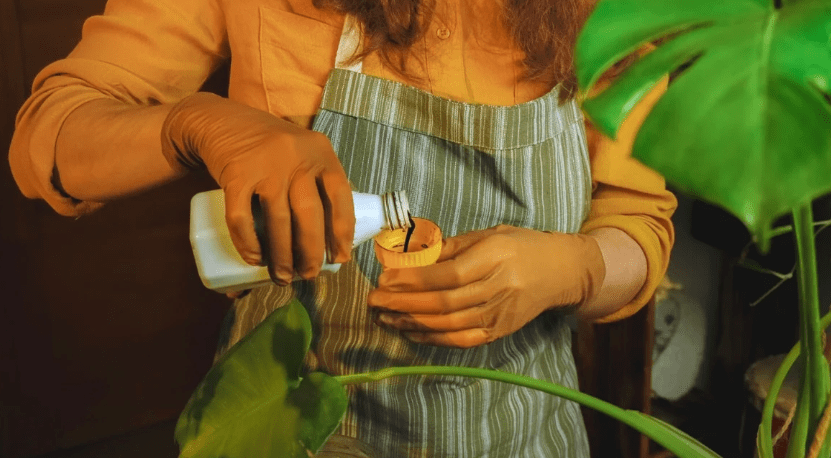
Frequently asked questions And Answer
Monstera leaves can curl due to a few reasons, including underwatering, overwatering, low humidity, or pests. It’s important to identify the specific cause in order to address the issue.
To prevent curling, make sure to water your Monstera plant consistently, provide adequate humidity, and regularly inspect the plant for any signs of pests. Proper care and maintenance can help promote healthy leaf growth.
If you notice curling leaves, try adjusting your watering schedule, increasing humidity around the plant, and inspecting for pests. Trimming any damaged or affected leaves can also promote new, healthy growth.
Yes, environmental factors such as temperature fluctuations, drafts, or direct sunlight can also contribute to leaf curling. It’s important to provide a stable and suitable environment for your Monstera plant to thrive.
While a balanced fertilizer can support overall plant health, it’s important to address the underlying cause of leaf curling first. Once the issue is resolved, providing proper nutrients can help promote healthy growth.
In addition to addressing any issues causing leaf curling, make sure to provide adequate sunlight, water, and humidity for your Monstera plant. Regularly clean the leaves, inspect for pests, and repot as needed to support healthy growth.
Some natural remedies for pest control, such as neem oil or insecticidal soap, can help address pest-related leaf curling. Additionally, maintaining proper humidity levels and watering habits can promote healthy, uncurled leaves.
If you’ve tried addressing potential causes of leaf curling and are still experiencing issues, or if your plant shows signs of severe distress, it may be beneficial to consult a professional plant care specialist for further assistance.
